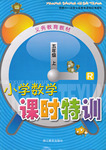题目内容
Opportunities don’t come often. They come every once in a while. Very often, they come quietly and go by without 1.(notice). Therefore, it is advisable 2. you should value and treat them with care. When an opportunity comes, it brings a promise but never realizes it3. its own. If you want to achieve something 4. intend to fulfill one of your ambitions, you must work hard, make efforts and get prepared. 5. , you will take no advantage of opportunities when they come to visit you. The difference between a man who succeeds and 6.
who does not lies only in the way each treats opportunities. The successful person always makes adequate preparations to meet opportunities as they duly arrive. The 7. (success) person, on8. other hand, works little and just waits to see them pass by. 1n my opinion, there are plenty of opportunities for everyone in our society, but only those who are prepared adequately and qualified 9. (high) can make use of them to achieve 10. purposes.
1.being noticed
2.that
3.on
4.or
5.Otherwise
6.one
7.unsuccessful
8.the
9.highly
10.their
【解析】
试题分析:文章大意:俗话说:“机不可失,时不再来”。文章主要讲述了抓住机会的重要性。
1.考查非谓语动词。介词without后及v-ing形式,注意用被动形式。
2.名词性从句。句中that引导主语从句,It为形式主语。
3.考查介词。这里为固定的短语搭配:on one’s own独自地。
4.考查连词。这里用连词or,表示“或者”。
5.考查副词。这里前后句含有转折之意,故用副词otherwise。
6.考查代词。这里one代指a man。
7.考查形容词。前后句句意可知,这里是指“不成功的”。
8.考查代词。这里考查固定短语搭配:on the other hand另一方面。
9.考查副词。这里修饰动词,故用副词修饰。
10.考查代词。注意主语为those,故用代词their。
考点:考查学生对词汇及语法掌握。

 导学教程高中新课标系列答案
导学教程高中新课标系列答案 小学课时特训系列答案
小学课时特训系列答案
Joshua, Helmut ,and Bethlehem Michelle O. Donovan ISBN 9781462058679 Life is not easy for nine-year-old Joshua during World War II. Because of his family’s Jewish background, they are sent to live in the concentration camps. Scared and alone, Joshua one day makes friends with a little mouse he calls Bethlehem who becomes his closest friend. | More Things in Heaven Bill Bosworth ISBN 9780595433582 In his More things in Heaven, Bill Bosworth presents the highlights of his 83 years of life, including his trips to India and the study of the writings of several great spiritual leaders. More Things in Heaven will appeal to anyone who insists on finding the deepest meaning for their existence based on their own experiences. |
Encourage Me! Inspirational Poetry Gloria Coykendall ISBN 9781412027854 It is an easy-to-read collection of poems originally written to encourage in faith and to be a cure for chronic depression… cure to strengthen identity and purpose. | |
Creation or Evolution Michael Ebifegha ISBN 9781450289023 Were humans created, or did they evolve? How old is the Earth? The debate between science and religion continues to be heated. In Creation or Evolution, Michael Ebifegha examines these two opposed world views within the structure of empirical science. | |
| |
Seeking the Edge Dr. Joseph L. Rose ISBN 9781462031795 Seeking the Edge provides the tools and techniques to find that edge in one’s life—driving readers to achieve success whether in your current job, finding a new job, in education, family, or even hobbies. |
1.Who wrote the story about a little boy and a little mouse?
A.Bill Bosworth. B.Michelle O. Donovan.
C.Dr. Joseph L. Rose. D.Gloria Coykendall.
2.The ISBN for the book of poems is _______.
A.9781462031795 B.9781412027854
C.9780595433582 D.9781462058679
3.What kind of readers will probably like reading More Things in Heaven?
A.Those who are searching for the meaning of life
B.Those who are trying to be spiritual leaders.
C.Those who study the art of writing
D.Those who like traveling abroad.
4.Which of the following books explores the origin of humans?
A.Seeking the Edge.
B.Creation or Evolution.
C.Joshua, Helmut, and Bethlehem.
D.More Things in Heaven.
 hat with his family, Tegan would han
hat with his family, Tegan would han